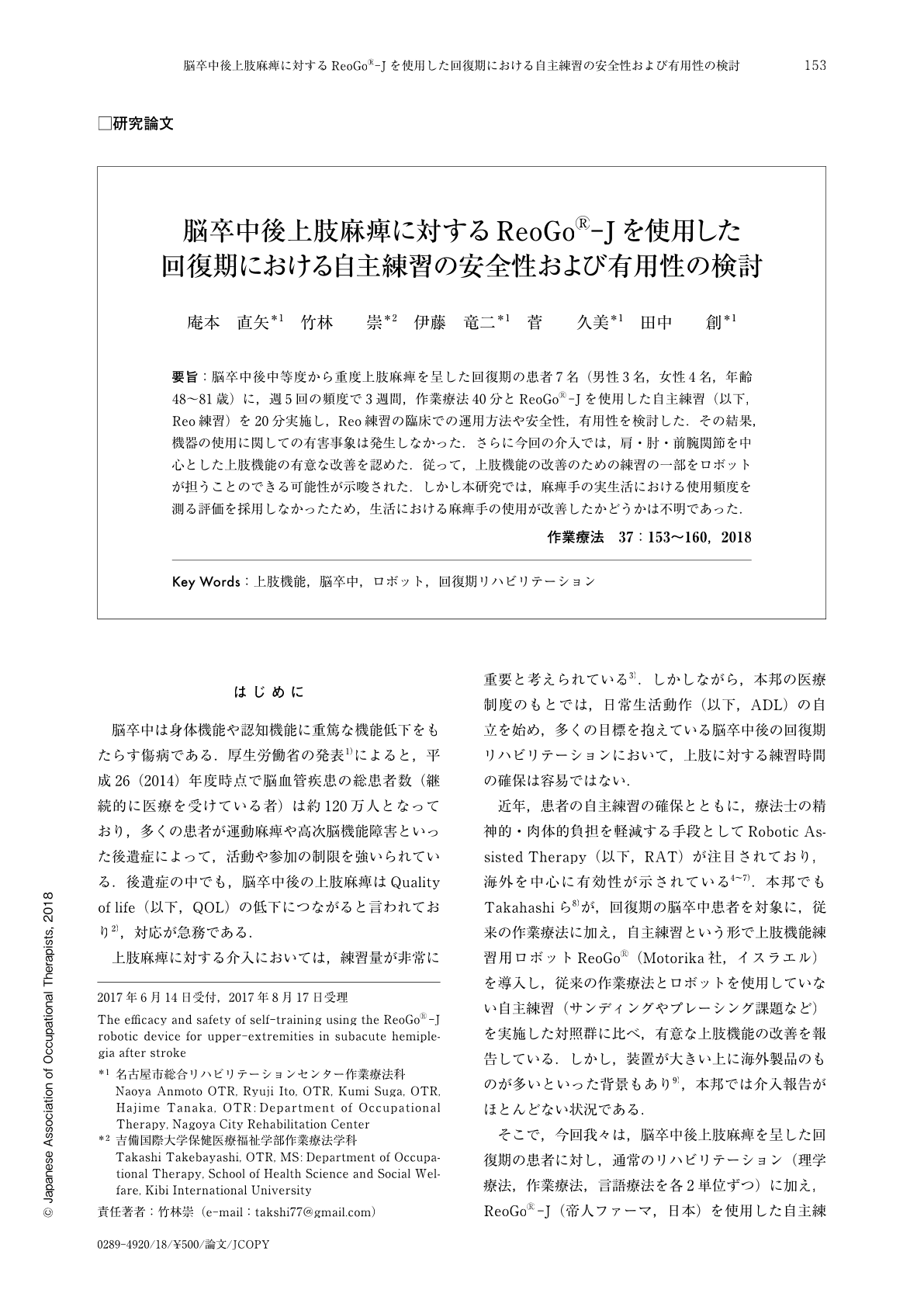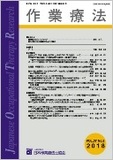Japanese
English
- 販売していません
- Abstract 文献概要
- 1ページ目 Look Inside
- 参考文献 Reference
- サイト内被引用 Cited by
要旨:脳卒中後中等度から重度上肢麻痺を呈した回復期の患者7名(男性3名,女性4名,年齢48〜81歳)に,週5回の頻度で3週間,作業療法40分とReoGo®-Jを使用した自主練習(以下,Reo練習)を20分実施し,Reo練習の臨床での運用方法や安全性,有用性を検討した.その結果,機器の使用に関しての有害事象は発生しなかった.さらに今回の介入では,肩・肘・前腕関節を中心とした上肢機能の有意な改善を認めた.従って,上肢機能の改善のための練習の一部をロボットが担うことのできる可能性が示唆された.しかし本研究では,麻痺手の実生活における使用頻度を測る評価を採用しなかったため,生活における麻痺手の使用が改善したかどうかは不明であった.
Seven subacute patients with severe-to-moderate arm deficits after stroke (male:3, female:4;age, forty-eight to eighty-one years old) received occupational therapy (OT) for 40 minutes and self-training using ReoGo-J (Reo practice) for 20 minutes, 5 times a week for 3 weeks. We investigated the operational method, clinical safety, and effectiveness of Reo practice. The results showed no adverse events related to using ReoGo-J. Additionally, shoulder, elbow, and forearm functions were significantly improved through the intervention. The results indicate that robotics might be able to assume a role in the training leading to the improvement of upper-extremity function. However, improvement in the affected upper-extremity use in activities of daily living is unclear because we did not use the outcomes to assess the amount of use of the affected upper-extremities in real-life.

Copyright © 2018, Japanese Association of Occupational Therapists. All rights reserved.


